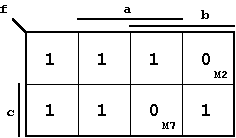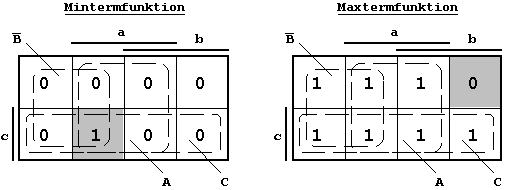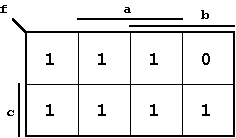
Figure 2.15: Indexing the Minterm and Maxterm Functions.
| Contents | Previous Chapter | Next Chapter |
There are some special Boolean Functions that - as can be seen just looking at the corresponding K-Maps - are built up in a very simple way. These are those functions that have only one single value '0' or '1'. By changing only this one function value these functions are transformed into the so-called 0-Function or 1-Function.
Therefore the function that contains only one '1' can be considered a minimal function, the one with only one '0' correspondingly a maximum function.
These special functions can be formed for an arbitrary number of arguments.
Definition:
In a K-Map these Boolean functions can be presented as follows:
The index i marks the field under consideration. It is determined by the values of the arguments (x,...,c,b,a).
Indexing Minterms and Maxterms:

Figure 2.15: Indexing the Minterm and Maxterm Functions.
Definition:
Example:

Figure 2.16: Production of Minterm and Maxterm Functions.
Using the abbreviations introduced above, the two functions in this example can be described algebraically as follows:
| Minterm: | 
|
| Maxterm: | 
|
Karnaugh Diagram of the result function (see above):

Figure 2.17: Example Function (Maxterm/Minterm description).
As can be seen from this K-Map, the Boolean function can be described using seven (7) Minterms or one (1) Maxterm.
| 7 Minterme: | 
|
| 1 Maxterm: | 
|
or, in short form:

|
|
 |
| Contents | Previous Chapter | Next Chapter |